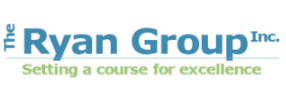Business Process Mapping (BPM404)
The course materials and learning outcomes are designed and well-suited for adult learners, academic executive education programs, organizational leadership programs, and corporate universities.
Course Segments and Duration
Business Process Mapping is a 9-segment, 12-week blended learning course configured as follows:
[*] Online teacher and student dialog and discussion meetings via Go-To-Meeting
Week 1: Orientation, Overview, Introduction to Business Process Mapping and Theory, and Business Process Mapping: The Basics. [*]
Week 2/3: Creativity and Innovation, Business Intelligence [*]
Week 4/5: Business Analytics, Predictive Analytics, Unified Communications [*]
Week 6/7: Case Activity, Manufacturing Operations [*]
Week 8/9: Team Activity, Strategic Planning Part A [*]
Week 10/11: Team Activity, Strategic Planning Part B [*]
Week 12: Course Review, Key Learning Points, Next Steps [*]
Course Materials and Lectures
All required course materials are included as part of the participant fee.
The course workbook (digital interactive)
The team activity guide (digital interactive)
The template appendix (digital interactive)
Six (6) recorded lectures/presentations (online, on-demand)
Course Content
Introduction to Business Process Mapping
Business Process Mapping Theory
Process Mapping – The Basics
Process Mapping – Application
Process Mapping – Business Case Activities
Process Mapping – Team Activities
Student Learning Objectives
This course is designed to provide students with the basic understanding of business process mapping while developing special skills, abilities, and competencies. The skills, abilities, and competencies you will develop, draw on, and use are
Perception - vision, observation
Organization - structure, planning, setting up
Logic - reasoning, deduction
Coherence - sequencing, order
Resolution - results, outcomes
Critical thinking
Problem analysis and decision-making
Considering alternative solutions – seeing beyond the obvious
Planning strategies and moves
Managing ambiguity
Situational Learning
The students are introduced to situations that require differing approaches and results including
Map a process as presented
Map a process to show improvement
Map a process to reflect the “as-is” and the “to-be” model
Map a process with both known and un-known information
Map a process for workflow management
Map a process to show root cause
Map a process to define competencies in an organization
Map a process to implement corrective actions and measures
Map a process for a major product improvement,
Map a process for a retooling of the production line, and
Map a process for selling the product in a global market
Map a process for uncovering sources of defective parts
Map a process for detecting design flaws
Map a process for tracking shipping and delivery
Map a process to identify an occurrence or situation
Map a process to develop a remedy or solution
The business situations used to apply student’s knowledge and skills are
A. Creativity and Innovation
B. Business Intelligence
C. Business Analytics
D. Predictive Analytics
E. Unified Communications
F. Manufacturing Operations, Case Activity
G. Strategic Planning, Team Activity
Instructional Methods
The instructional methods will use the adult learning theory approach. Education-based and competency-based learning, in particular, must acknowledge and account for the characteristics of adult learners and the learning strategies that work best with adults. Adult learners expect, and deserve, to leave the experience with competencies that can directly and immediately be applied on the job. In the case of education opportunities, participants must be able to recognize and use the competencies in real job situations. Simulations and role-play rank high among the most useful learning techniques for emphasizing a “training-in-context” concept, where the learning environment approximates the workplace environment in as many contextual ways as possible. This is characteristic at all levels within the organization. And, by using this approach, students will be confident in the use of their newly acquired skills and competencies on the job.
Course Delivery Approach
The course delivery approach in one of blended learning encompassing a combination of online presentation, self-paced activities, (e.g., reading and completing activities), discussions, and interactive questions and answers. The activities include both individual and team exercises.
Who is this course for?
This course is designed and developed for adult learners who want to attain a proficiency and mastery of business process mapping. The rigor contained in the assignments is aligned with learners at the MBA, masters, and executive education level.
